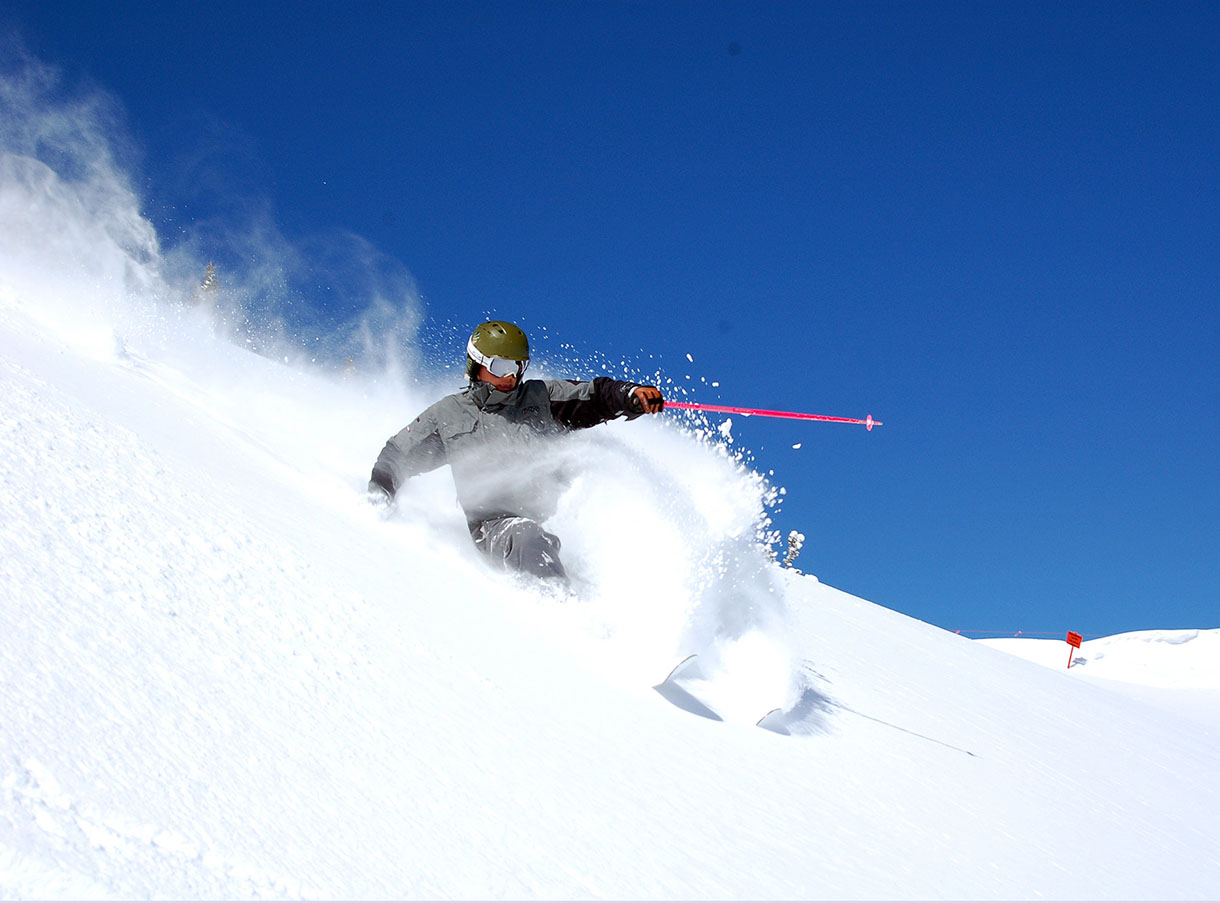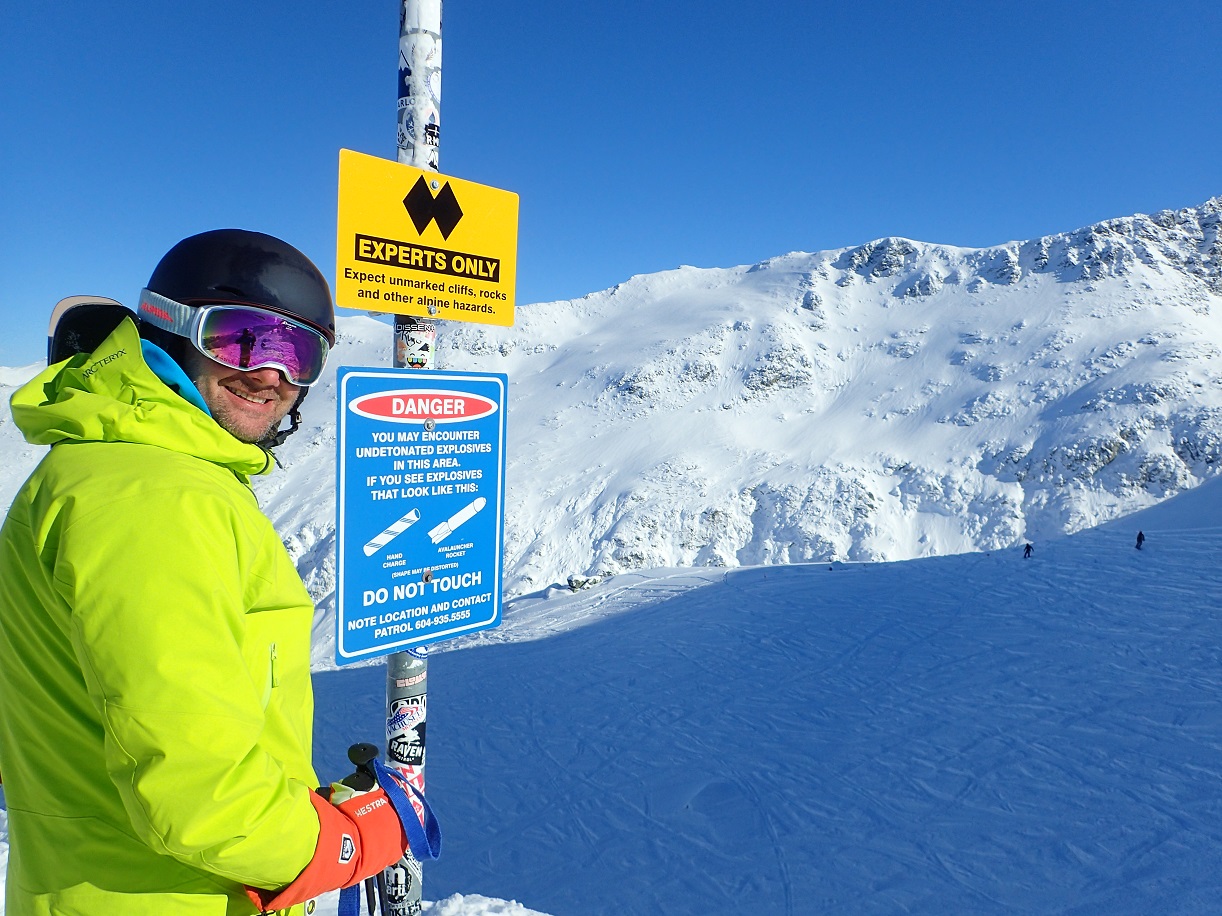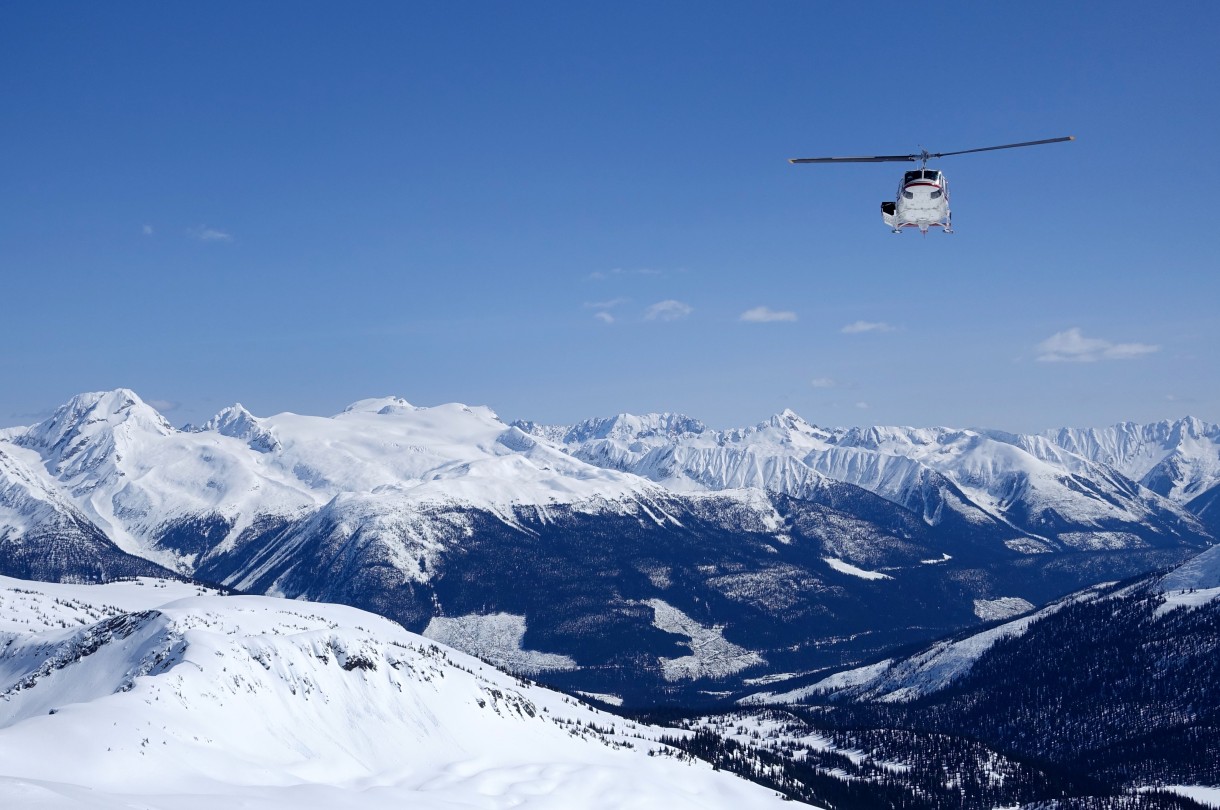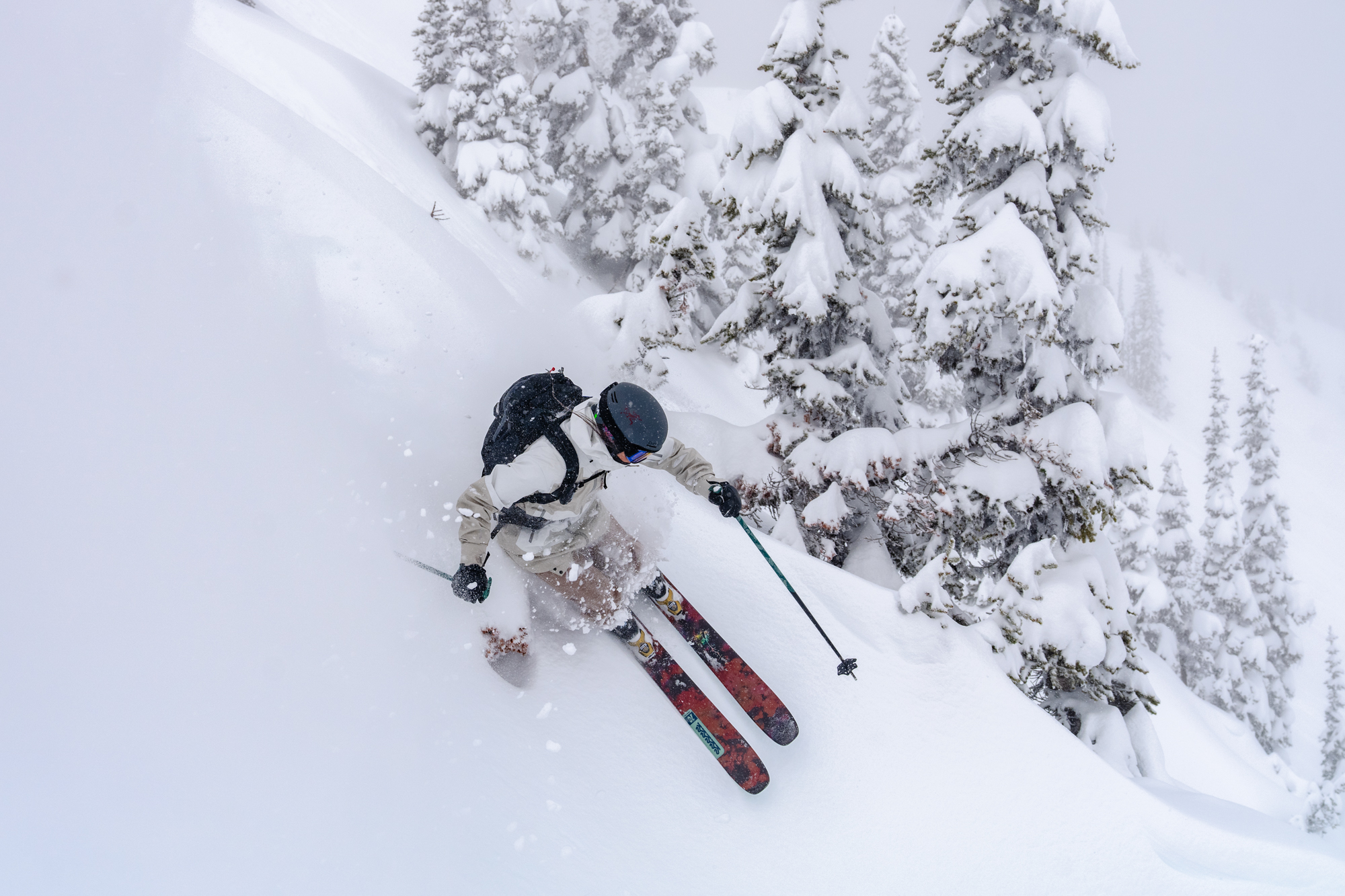
Driving curves in powder snow
Floating and gliding effortlessly in soft snow dust is probably the greatest pleasure for every skier, because what could be better than ultra-soft powder far away from marked slopes when heli-skiing or cat-skiing? That’s right, nothing! But skiing in powder should be learned. SKI KANADA, SKI USA and the German Ski Instructors Association (DSLV) show what is important when surfing through the white gold.
Curves in powder: deep snow skiing explained simply
 A dream come true: a helicopter flight into the mountains and off to treeskiing in Alaska or the Monashees. Stop! heliski-firsttimers often forget what it means to be on unprepared slopes. Deep snow, deep snow, deep snow – that sounds outstanding at first, but you should adapt your skiing style and especially your turn control to the conditions.
A dream come true: a helicopter flight into the mountains and off to treeskiing in Alaska or the Monashees. Stop! heliski-firsttimers often forget what it means to be on unprepared slopes. Deep snow, deep snow, deep snow – that sounds outstanding at first, but you should adapt your skiing style and especially your turn control to the conditions.
The right equipment
– rather wider (waist > 90 mm) and longer (body length up to plus approx. 10 cm) all-mountain skis
– the wider the skis, the greater the lift
– large pole plates -> better lateral support aid, also when pushing on
– tight clothing and tight ski goggles -> no snow dust on the body and in the eyes
In deep snow you should not go too slow, higher speed provides more lift and the ski glides smoothly like butter through the powder. Fresh powder snow compacts very quickly, so short turn radii close to the fall line are the order of the day here. This ensures less friction and more driving force.
Skiing tactics
– rhythmic up and down movement
– cornering without interruption (= cyclic) and with an accentuated rhythm facilitates changing direction
– narrow leg position -> increases the surface effect of the skis and thus the lift, increases stability
– Position and load rather on the whole sole of the foot up to the heel -> allows the ski tips to float better (less necessary with rocker skis and skis with excess width)
– load rather in the middle and on both legs (but more load remains on the outer ski) -> better load regulation possible
– very little and only dosed canting movements -> keeps the surface effect of the skis large and thus increases lift and stability
Skiing technique
When changing turns in deep snow, braking a deep movement from the legs increases the load and compresses the snow under the running surfaces. This creates a compression of the snow under the ski and if you connect the upward movement directly, a so-called jump effect is created, which is increased with the braking of the upward movement – this leads to the unloading of the skis, which is used to change direction. The use of the pole serves as an additional relief and rhythm aid. The stronger and faster the low movement is slowed down from the control and the high movement is connected, the higher the compression and the following jump effect for the turn change – this is also how the so breathtaking floating feeling is created.
In cornering, it is important to pay attention to harmonious, dosed and even downward movement or bending from the legs in order to let the ski glide effortlessly. When cornering with large radii and at high speed, the same principles apply, here the requirement is particularly on the correct dosage of all movements and on an exact load distribution front-back and inside-out.
Next: cornering in frozen dew
Back to the beginning here.
Even more information on ski and snowboard technique topics can be found in the curricula of the German Ski Instructors Association:
DSLV Lehrplan – Skifahren einfach, 2012, ISBN 978-3-8354-0869-2
DSLV Lehrplan – Freeriden einfach, 2012, ISBN 978-3-8354-0872-2
DSLV Lehrplan – Snowboarden einfach, 2012 ISBN 978-3-8354-0870-8
News
[qodef_blog_list type=“masonry“ number_of_columns=“one“ space_between_items=“small“ orderby=“date“ order=“DESC“ image_size=“custom“ post_info_author=“no“ post_info_date=“no“ post_info_category=“no“ number_of_posts=“2″ category=“news“ custom_image_width=“316″ custom_image_height=“178″]Powered by Juicer.io
Partner
News
[qodef_blog_list type=“masonry“ number_of_columns=“one“ space_between_items=“small“ orderby=“date“ order=“DESC“ image_size=“custom“ post_info_section=“no“ number_of_posts=“2″ category=“news“ custom_image_width=“316″ custom_image_height=“178″]Powered by Juicer.io
Partner
Leave a Comment
Du musst angemeldet sein, um einen Kommentar abzugeben.








